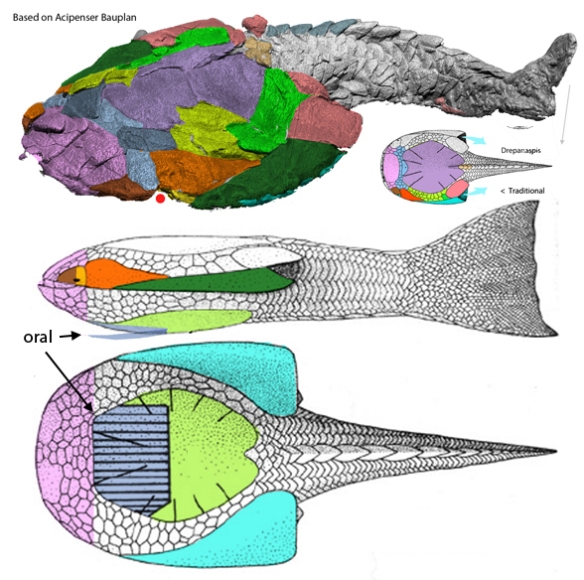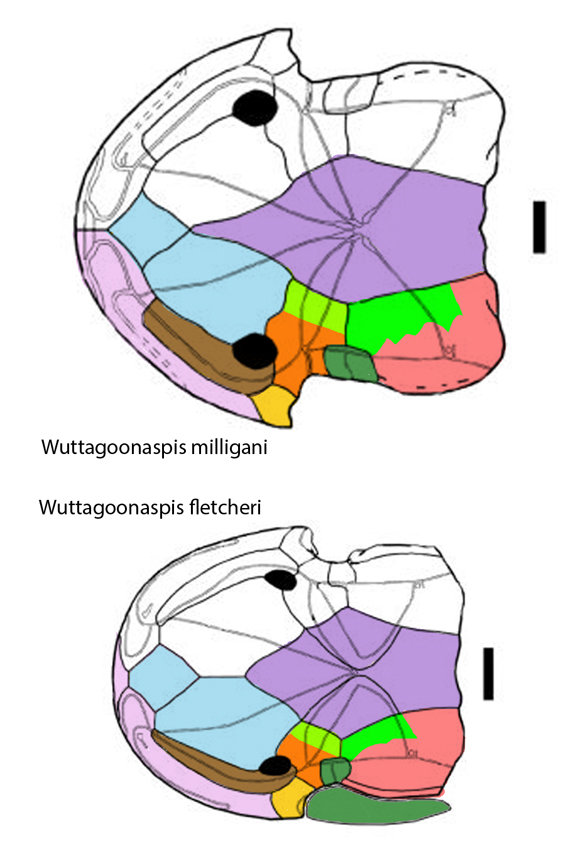According to Wikipedia,
“Wuttagoonaspis (Fig 2) is an extinct genus of primitive arthrodire placoderm fish from the Middle Devonian of Australia.”
By contrast, in the large reptile tree (LRT, 2306 taxa) Wuttagoonaspis (Fig 2) and Kalanaspis (Fig 3) now nests basal to derived hetrerostracans, like Zenaspis (Fig 4, close to Hemicyclaspis (Fig 5). All were derived from disc-like primitive chordates like Drepanaspis (Fig 1), which has tiny lateral orbits and a ventral oral cavity.
In this hypothetical phylogenetic sequence
(Figs 1–4) one can trace the migration of the lateral eyes in Drepanaspis (Fig 1) as they move step-by-step to the middle of the skull in Wuttagoonaspis and Kalanaspis (Figs 2, 3), and then to the top of the skull (Fig 4) in Zenaspis.
Apparently only the front part of the skull
in Kalanaspis (Fig 3) appears to be preserved in this specimen, as compared to Wuttagoonaspis (Fig 2). If instead this is a complete skull, then the posterior half has evolved away. Or the orbit is misidentified here.
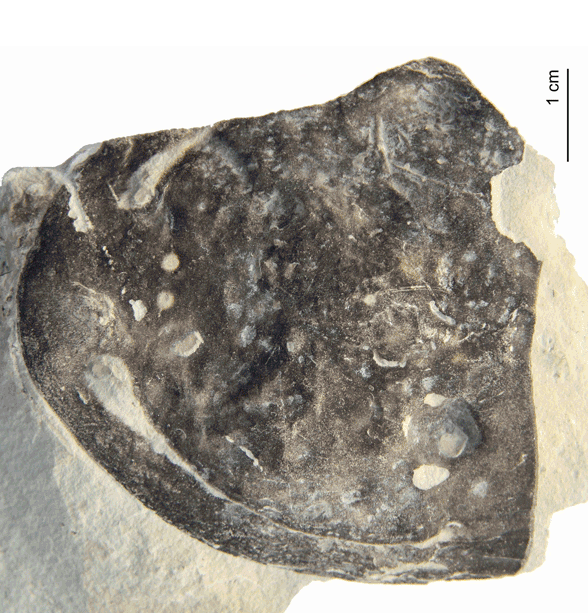
The DGS tetrapod homology colors applied to these taxa
have been revised from previous interpretations and are themselves subject to change. The Wuttagoonaspis diagram (Fig 2) provides the Bauplan for this attempt at determining where sutures might be on the suture-less skulls. Even the orbit of Kalanaspis (Fig 3 )is a best guess, revised here from prior best guesses.
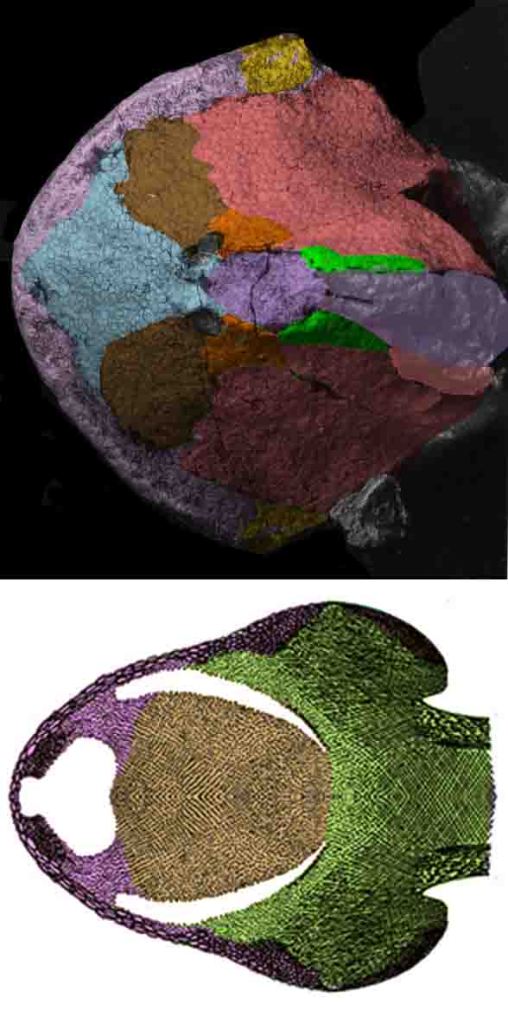
Heterostracans, like Zenaspis, remain the sister clade
to the extinct and extant sturgeons (Acipenseridae, Fig 5) in the LRT.
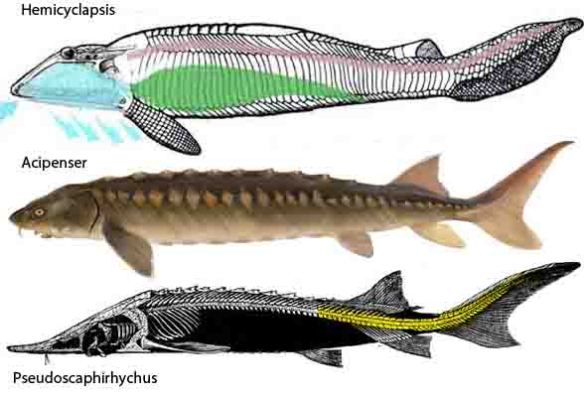
Wuttagoonaspis fletcheri
(Ritchie 1973; Middle Devonian) was originally considered ‘an unusual arthrodire’ from Australia. Here it nests basal to the heterostracan, Hemicyclaspis (Fig 5). The mouth and nares must be ventral because they are not visible dorsally.
This appears to be a novel hypothesis of interrelationships.
If not, please provide a citation so I can promote it here. Housekeeping, like this, continues to improve the scoring and resolution of the fish subset of the LRT.
References
Ritchie A 1973. Wuttagoonaspis gen. nov., an unusual arthrodire from the Devonian of Western New South Wales, Australia. Palaeontographica 143:58–72.

